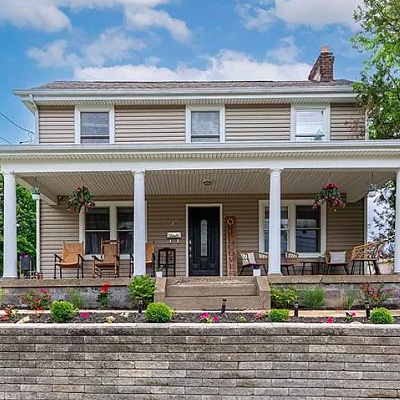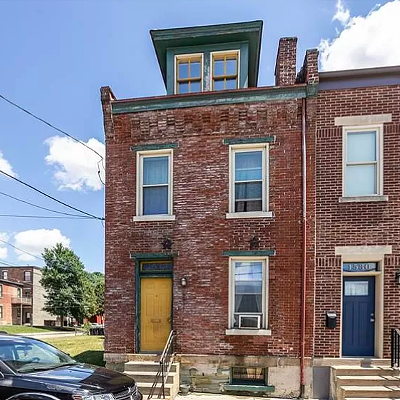The span you're thinking of is the Lincoln Avenue viaduct. And it is to municipal bridge projects what critics say the Pittsburgh Fire Bureau is to public safety: a massive, seemingly ancient juggernaut that appears much larger than it needs to be.
Built in 1905, the bridge's dimensions are actually fairly modest: Its two stone arches only span about 120 feet, and it never carried anything heavier than trolley cars. Yet its solid masonry connection makes it seem to have a mass and density all out of proportion with its actual size.
Part of the reason for this effect is that the Lincoln Avenue viaduct passes beneath the arch of an even larger, but similar, span: the Brilliant Cutoff.
The Brilliant Cutoff runs alongside Washington Avenue, on six rock-faced arches totaling some 500 feet in length. The structure was built in 1902 by the Pennsylvania Railroad, though why anyone would build a bridge this size out of stone is a matter of some conjecture. Steel-truss bridges were common in those days, especially in Pittsburgh. (The Smithfield Street Bridge, for example, had been built two decades before.) Walter Kidney's book Pittsburgh Bridges: Architecture and Engineering, speculates on several possible reasons for the heavy stone construction of this and other bridges: "The prospect of heavier and heavier steam locomotives ... moving rapidly and pounding against the rails, must have made bridges of heavy, inert masonry, equal to anything the future might bring, seem ... well worth the cost."
Two years after the Brilliant Cutoff was completed, the city of Pittsburgh built the smaller Lincoln Avenue bridge, which snakes its way just underneath the Brilliant span. Together, the two stone bridges look like relics from Machu Picchu, or remnants of the days of Mordor when magic filled the air of Middle Earth. (Yes, I've been listening to Led Zeppelin lyrics while drunk again ... what of it?)
Indeed, these days the stretch of Washington Avenue nearby looks more like Mordor than ever: a weedy concrete wasteland of exhaust and ash. But it was once a much more scenic area. In fact, Kidney surmises that the city may have built the Lincoln Avenue bridge out of stone because of "moral pressure from the handsome railroad viaduct and the park-like Boulevard itself." Near the intersection of the two spans there was once a spring-fed pond known as Silver Lake. The lake was a noted spot for skating, and with the massive stone bridges -- both rustic and monumental -- as a backdrop, an oddly scenic locale worthy of postcards.
Sadly, that's all gone now. Years later, as you mention, cars replaced ice skaters at Silver Lake, as the spot became a drive-in. Eventually, the theater disappeared and cars were all that was left. Now, even the meaning of the phrase "Brilliant Cutoff" has been lost. My man Bruce Cridlebaugh, whose Web site "Bridges and Tunnels of Allegheny County and Pittsburgh" (pghbridges.com) is an invaluable resource for this sort of thing, says that "Brilliant" was the name of a long-defunct oil refinery. The name was later given to the "Brilliant Reservoir" and its associated pumping station -- key parts of the city's early water-delivery system.
But looking at these things, you get the sense they'll still be around long after everything else has been ground into dust. (Come to think of it, a lot of things the Pennsylvania Railroad did were designed to have that effect, come to think of it: building stone bridges, breaking strikes, buying entire state legislatures.) Who knows? The bridges may even outlast the Pittsburgh Fire Bureau.










